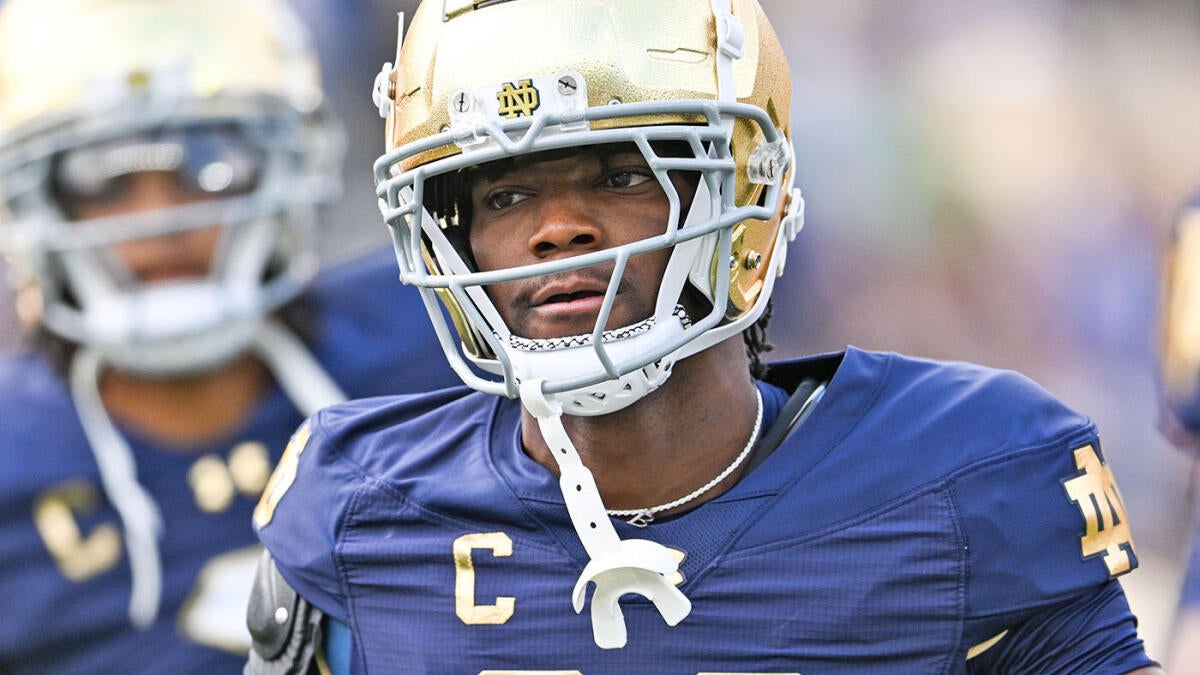Many believe it’s unfair to compare an NFL rookie to an NFL Hall of Famer. And it’s not crazy. But as long as the comparison before any player puts pads on for their first professional game is trait-based — heck, all of them should be — then they should be fair game. All Hall of Famers were just rookies at some point.
With the small, four-member 2025 Hall of Fame class that features Eric Allen, Jared Allen, Antonio Gates and Sterling Sharpe getting enshrined in Canton, Ohio, this weekend, let’s draw some parallels to 2025 rookies set to embark on their NFL careers this fall.
And with plenty of deference for the past, I carefully made these selections with an emphasis on not forcing any, which is why we passed on a Sharpe comparison.
Active NFL players who are destined for Hall of Fame: Patrick Mahomes, T.J. Watt slam-dunk selections
Jeff Kerr

Any comparison to Allen has to be centered around tremendous, natural ball skills that will lead to considerable pass breakup and interception totals in the NFL. The former Eagles, Saints and Raiders great hit the ground sprinting with five picks as a rookie in 1988 and finished with a whopping 54 in his Hall of Fame career. Pass breakups weren’t officially logged until 1999, and even in his third-to-last season, Allen had 17 of those with the Raiders.
Morrison came on the scene in South Bend in 2022, and snagged six interceptions. In 2023, he hauled in three more. And the smaller Allen was such a smooth but dynamic mover. It allowed him to break on the ball in a flash, and he played the game with essentially zero stiffness.
The same is true with Morrison, who I thought was every bit as good in pure man coverage as Travis Hunter. Because of his 2024 injury, the Buccaneers were able to select him in the second round. Morrison surrendered less than a 46% catch rate in all three of his campaigns at Notre Dame. Playing for a defensive-minded coach in Todd Bowles increases the likelihood of Morrison reaching his potential in Tampa Bay too. And that absolutely maximum potential is Hall of Fame caliber.
Allen entered the NFL at 265 pounds. Pearce tipped the scales at 245 pounds, so there’s work to be done for the Falcons rookie in the weight department for this comparison to ultimately hit.
In terms of on-field style, the two outside rushers are clearly comparable, with immense bend and surprising point-of-attack power to drive offensive tackles into quarterbacks’ laps.
The two played completely different competition levels in college — Allen in the Big Sky at Idaho State, and Pearce in the SEC at Tennessee but are easily tied by production. While we don’t have career pressures for Allen in college, he registered a seismic 38.5 sacks, 73 tackles for loss, and 13 forced fumbles across three seasons. Pearce had 19.5 sacks, 30 tackles for loss, and three forced fumbles in 39 games with the Volunteers, and ended his career in Knoxville with back-to-back seasons generating a pressure on more than 20% of his pass-rush opportunities.
The sheer relentlessness these two play with on a down-to-down basis was the final convincing factor for me — Pearce is the most Allen-like rusher in this rookie class.
Gates famously went undrafted out of Kent State in 2003 after only playing basketball for the Golden Flashes. Quit While Fannin Jr. certainly has an extensive football-playing background, I’m drawing this parallel because of the uniqueness of his gait on the field.
Fannin runs like he’s nursing an injury, or there are limitations to his knee flexion. Ask any defender in the MAC if there’s anything hindering Fannin’s capabilities on the field, and you’ll get a resounding negative on that question. Fannin caught 117 passes for 1,555 yards — neither are typos — last season at Bowling Green. Everyone knew he’d be peppered with targets every game. It didn’t matter. He still produced at a high level.
Like Gates, the consummate receiving tight end in the 2000s, Fannin steps onto the field not to block but to get the rock thrown in his direction and generate splash plays with the ball in his hands. In the MAC last season, Fannin forcing a whopping 34 missed tackles on his 117 grabs and averaged 13.3 yards per catch — he routinely threatened the seam, in vintage Gates form.
Despite catching 955 passes in his legendary NFL career, Gates averaged 12.4 yards per grab in the NFL. As a receiving specialist at the tight end position, I was compelled to go with an underdog for this comparison to Gates. No one thought Gates would amount to anything in the NFL.

